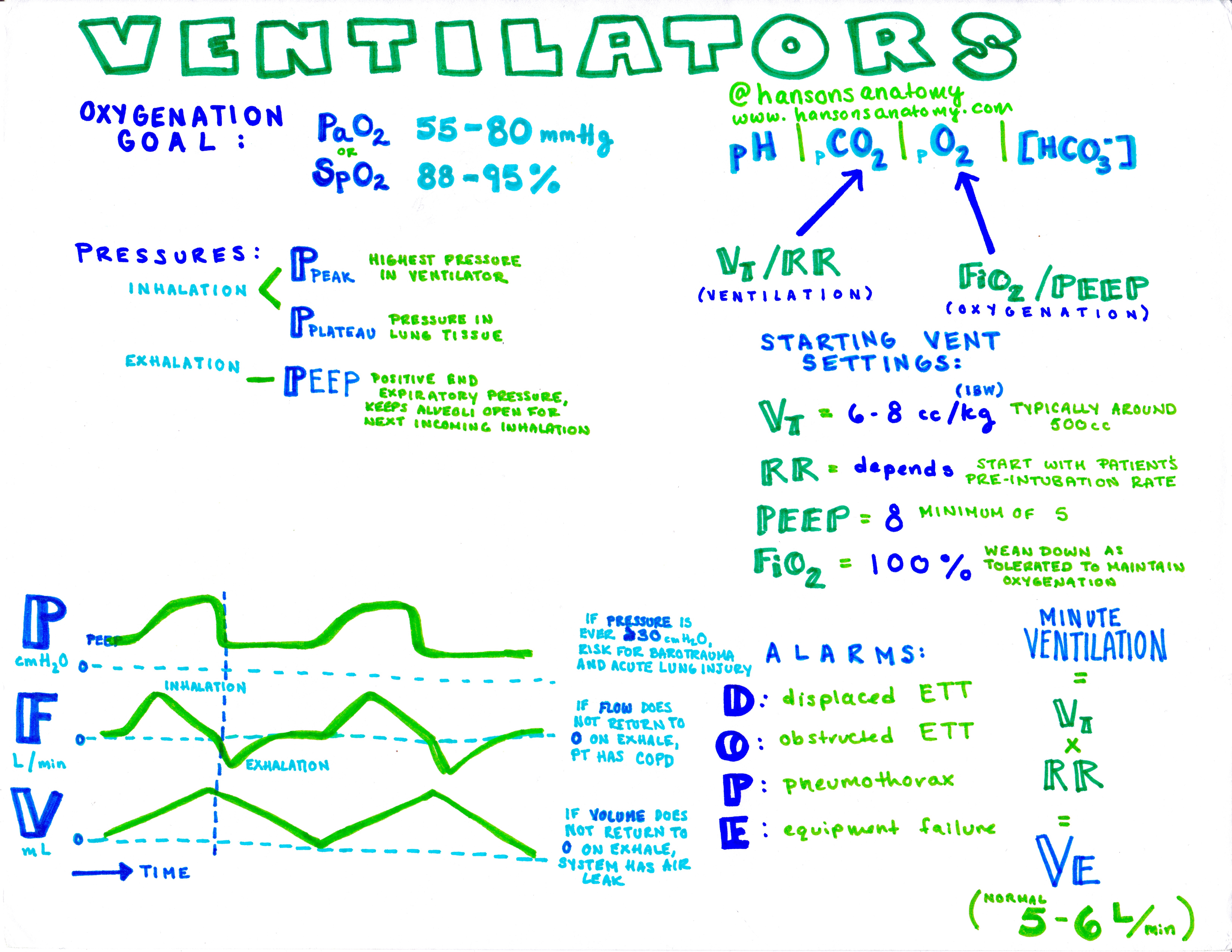Authors: Alex Koyfman, MD (@EMHighAK) // Edited by: Brit Long, MD (@long_brit) and Manpreet Singh, MD (@MprizzleER)
Welcome to this week’s EM Educator Series. These posts provide brief mini-cases followed by key questions to consider while working. The featured questions provide important learning points for those working with you, as well as vital items to consider in the evaluation and management of the specific condition discussed.
This week has another downloadable PDF document with questions, links and answers you can share with learners as educators in #MedEd.
Case #1:
A 77-year-old male with history of COPD presents with severe shortness of breath, difficulty with ambulation, productive cough, and fevers. He has felt weak and feels his normal activity is severely limited. He has also needed to increase his baseline oxygen from 2L to 5L, though it isn’t helping. His VS include RR 28, HR 110, BP 89/48, T 38C, and Sats 82%. What should you consider regarding this patient’s airway and respiratory status?
Case #2:
A 23-year-old male is brought in by EMS with head trauma after a motorcycle crash. He was not helmeted, and his GCS is 4. He is hypertensive, bradycardic, and has a dilated pupil on the right. What airway and intubation considerations are required?
Case #3:
A 55-year-old female with severe respiratory distress and diffuse interstitial infiltrates on chest x-ray has been intubated. She is receiving empiric treatment for pneumonia with antibiotics, as she was febrile, tachycardic, and tachypneic with productive cough. Her ETT was confirmed with ETCO2 and X-ray. You are concerned about ARDS, but what ventilator settings should you utilize?
Considerations:
What do you need to know regarding the airway and physiology in intubation and ventilation for these patients?
- COPD / asthma
- Metabolic acidosis (e.g. DKA, salicylate tox)
- Shock e.g. septic, cardiogenic
- Pulmonary hypertension
- Elevated ICP
- Upper GI bleed
- PE
- Cardiac tamponade
- Anaphylaxis / angioedema
- Aortic stenosis
- Morbid obesity
- Pregnancy
- ARDS
- Post-intubation crash
From Dr. Katelyn Hanson and Hanson’s Anatomy:




Suggested Resources:
- Articles:
- emDOCs – High Risk Post Intubation Patients
- emDOCs – Intubating the Critically Ill Patient
- emDOCs – The Difficult Airway: Common Errors During Intubation
- emDOCs – The Crashing Pulmonary Hypertension Patient
- emDOCs – The Sphincter Series: A Scary Airway Review
- emDOCs – The Scary Airway Series Part II: Mastering Obesity, Peds, and Burns
- emDOCs – Acute respiratory distress syndrome (ARDS): who’s at risk and ED-relevant management
- First 10 EM – Post-intubation deterioration in asthma
- PulmCrit – Eight pearls for the crashing patient with massive PE
- PulmCrit – PulmCrit: Fighting refractory ARDS with physiologic jujitsu
- UMEM Educational Pearls – The risks of intubation with pericardial tamponade
- LITFL – Trauma and Pregnancy
- R.E.B.E.L. EM
- EMCrit – The Crashing Ventilated Patient Handout – Zero to Hero Handout
- Podcasts:
- EMCrit – Podcast 129 – LAMW: The Neurocritical Care Intubation
- EMCrit – EMCrit Podcast 5 – Intubating the Critical GI Bleeder
- EM Basic – Anaphylaxis Part 2- Airway
- EM Cases – Episode 69 Obesity Emergency Management
- R.E.B.E.L. EM – REBEL Cast Ep 46b: Vent Management in the Crashing Patient with Haney Mallemat









